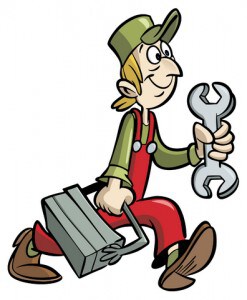Air Conditioning Alternative Lauded
How a whole-house fan works
by Bill and Kevin Burnett, Inman News

There is an air conditioning system, but it is not zoned and the ductwork is inadequate on the (hottest) floor.
On very hot days, the sun pummels us all afternoon, and the heat just soaks into the wood shingles. By evening, the air inside is as hot as the air outside, and by nighttime, the air inside is far hotter than the air outside. Ceiling fans do little but mask the discomfort.
We have been considering installing an electric fan of some sort. A traditional attic fan sounds ideal, except we have no attic. Is there some variation we could use that would vent the hot air and draw in the nice, cool nighttime air?
A: Air conditioning helps some by mixing cool conditioned air with hot air in the house. But the AC does nothing to reduce the radiant heat emitted by the baked roof and siding. The solution is during the cooler times of the day, morning and evening, to exchange the hot inside air for the cooler outside air.
You’re right that an attic fan is a possible solution. But attic fans move hot air from the attic only. They do nothing to promote air exchange inside the house. Instead of an attic fan, consider a whole-house fan.
A whole-house fan cools a structure by pushing hot air from the interior of a house out and drawing cooler, fresh air inside through open doors and windows. In the morning and evening, crack a few windows and doors and let the cooler air flow in while the whole-house fan discharges the hot air through the roof.
Basic physics tells us that hot air rises. That’s why it’s so hot on the second floor. Placing a whole-house fan at or near the high point of the house will accelerate the removal of hot air and replace it with cooler air entering the house through open doors and windows.
The fan cools a house by using the temperature difference between the inside and outside air. It will not make the temperature lower than that of the outside air. So you should run a whole-house fan only when the temperature outside is lower than the house’s inside temperature. Nights and early morning are the best times to run the fan.
Some planning is required to choose the right fan. A fan is measured by the number of cubic feet per minute (CFM) of air it can move. You’ll need to size the fan correctly for your house for it to work efficiently. It’s possible that you will be best served with two fans, depending on the layout of your home.
Whole-house fans are designed to discharge interior air into an attic and through the attic vents to the outside. Since you don’t have an attic, you’ll need to discharge the interior air directly to the outside. This means you will need a vent hood over the fan opening.
Normally, installing a whole-house fan can be a do-it-yourself job. But you’ve got special circumstances — to wit, no attic. Unless you’re an accomplished carpenter/roofer, you may need the help of these professionals. Also count on using an electrician to properly wire the fan. If a permit is required, get one.
Copyright 2010 Bill and Kevin Burnett
To subscribe to our blog, click here.















 Accessibility
Accessibility